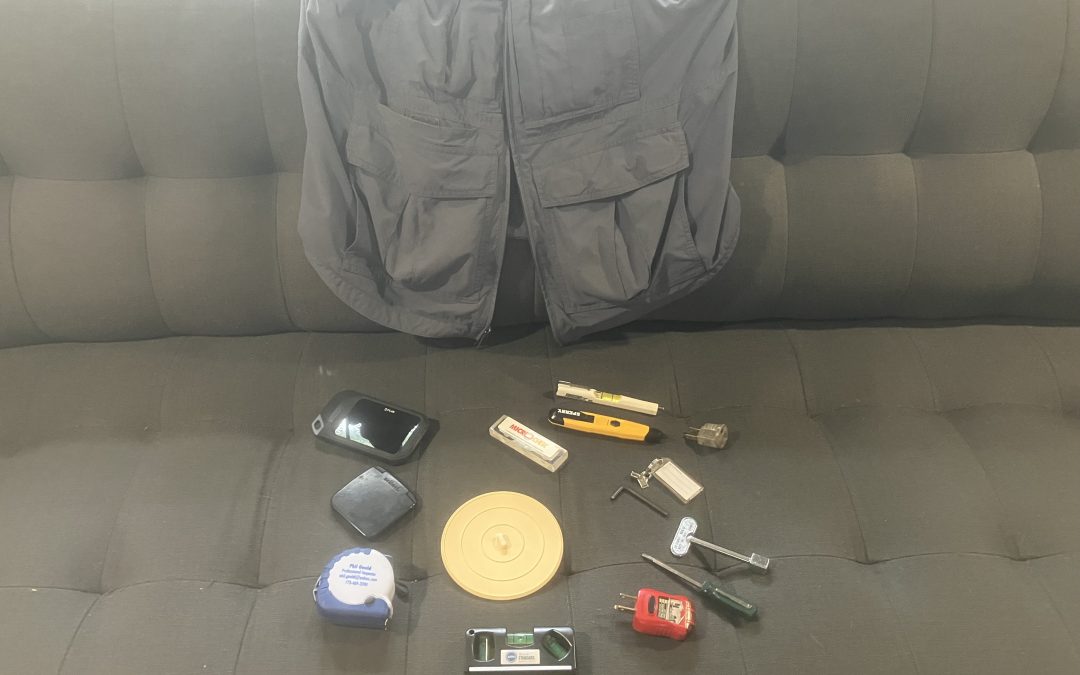There is an unwritten rule that inspections shouldn’t take too long. It is generally 3 hours for a typical single family home. Of course it sometimes goes longer, and that is okay when necessary. However I keep adding things to my routine, so I needed to find ways to still meet the time constraints and not leave anything out.
Work Vest:
For many years, I carried a few small tools in a pouch on my belt. When the latest pouch started to wear out, I found out that they were no longer manufactured. I now wear a work vest with many pockets. It saves so much time with not needing to return to my tool bag that is usually in the basement utility room or in the kitchen.
In the old tool pouch, there was an outlet tester, small screwdriver, a pen-shaped level, voltage checker, and pocket mirror. The work vest has these things and also allows for a thermal image camera, tape measurer, flat tub stopper for whirlpools, microwave checker, allen wrench, radiator valve key, fireplace gas line key, 2-prong outlet adapter, and mini 3-way level. This probably saves 20 minutes on a typical 3-hour inspection.
Camera as Notes:
I also save time by using my camera to remember things instead of writing everything down. If an outlet is loose, I take a photo with my hand in the shape of an “L”. If a window screen is missing, I take a photo with my hand through the open window. I still write down some things in case a photo is blurry, such as data from the furnace, air conditioner, and water heater.
Do the Expensive Things First:
The first half of the inspection is typically roof, exterior, foundation, and mechanicals such as furnace, air conditioner, water heater, and electric panel. The second half is usually interiors including windows, doors, floors, ceilings and walls, electrical fixtures such as switches, lighting, and receptacles. This also includes all appliances and plumbing fixtures.
Limit Ancillary Services:
Many inspectors offer extra services such as radon testing, mold testing, wood destroying insects, pool inspections, sewer scoping, and chimney scans. These things all add time if done by a solo inspector at the same time as the inspection. I do radon testing and wood destroying insect inspections, since more of the time for these is spent back at the office writing the reports.

